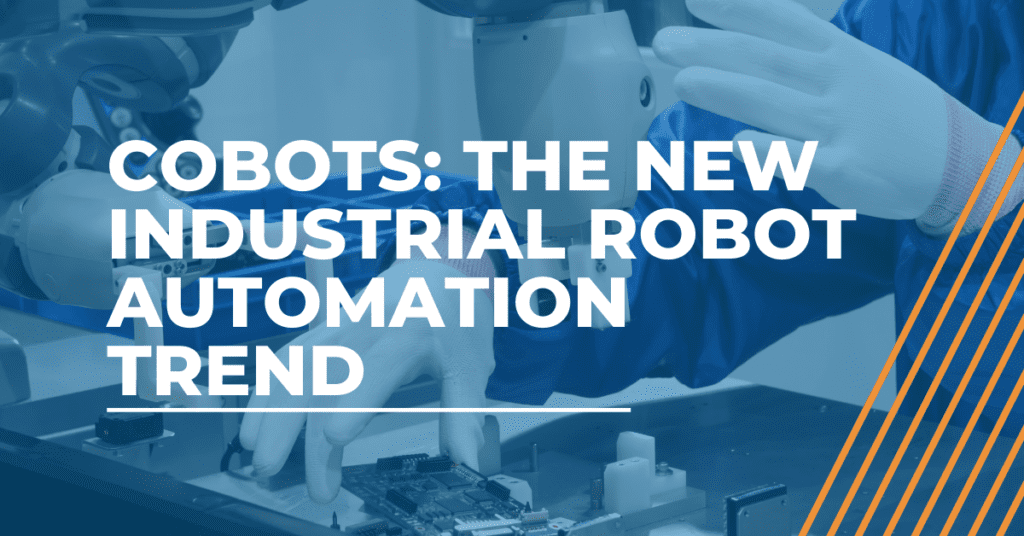
Cobots: The New Industrial Robot Automation Trend
Since George Devol’s first robot, Unimate, was implemented in GM during the 1950s, the use of industrial robot automation has skyrocketed into the 21st century. Industries, from automotive to food packaging, have adopted the trend of integrated robots to increase efficiency, quality and productivity in their work setting. Recent advances in ease of deployment and usability have greatly increased the demand for integrating industrial robots.
Cobot Innovation
Collaborative robots, or cobots, are automated solutions that work alongside and with humans to complete tedious or physically challenging activities, making their jobs simpler and opening opportunities for more productive tasks. Cobots are designed to improve human-robot collaboration. Rather than replacing a person, a cobot can collaborate with people, resulting in higher production and overall efficiency. For companies looking to adapt to the trend and integrate industrial robot automation, cobots are a great starting point.
Benefits of Cobots
Encourage collaboration. This may seem self-evident given the term cobot, but fostering human-robot collaboration hasn’t always been simple or even safe.Cobots are growing into technology that can be designed and set up by the people who will be using them. Back-breaking, repetitive and tedious work can be delegated to cobots, allowing individuals to focus on work that leverages their expertise and talents.The underlying power of industrial cobots is that they allow humans and robots to collaborate in a flexible and versatile manner.
Easy to set up and program. Cobots are designed to be simple to set up and program, removing any barriers to collaboration.Cobot applications may be configured and reconfigured for many jobs and workflows using their straightforward software, making them a versatile automated solution that can improve many different sectors of industrial operations.This adaptability is critical in the age of Industry 4.0, when robot interoperability and automated technologies are becoming more commonplace.
Enhanced consistency and repeatability. Arguably the most significant advantage of any robot, but particularly industrial collaborative robots, is their ability to reliably do repetitive tasks without the hazards of repetitive motion injuries or exhaustion that humans suffer. People can be freed up for more skilled professions. They are also less likely to get burned out or harmed if these duties are delegated to cobots.
Increased safety in the industrial setting in a variety of ways. Traditional robot arms, such as those used in car factories, are incredibly powerful but lack the capacity to identify and avoid obstacles. To avoid mishaps, they needed to be separated from the public in industrial robot automation. The more intelligent cobot arms can work alongside people in a safe manner, lowering the risk of major injury. Furthermore, as previously said, cobots are well-suited to repetitive, labor-intensive jobs, preventing individuals from performing chores that could result in damage and lost time. People can be kept at a safe distance from each other and dangerous equipment such as forklifts by using mobile robots.
Looking at Industrial Robot Automation?
How could adding robots or cobots increase your productivity and profitability? We’re happy to review the options with you. Contact us for no-strings-attached application review.
